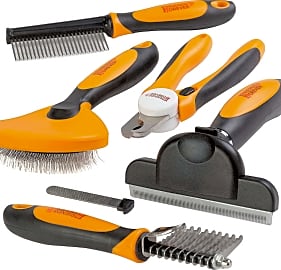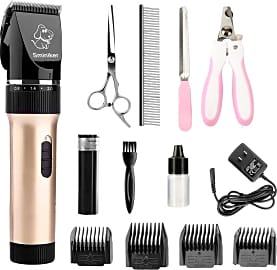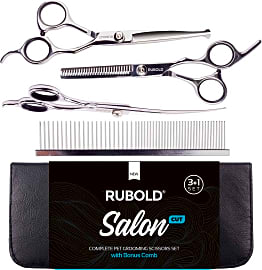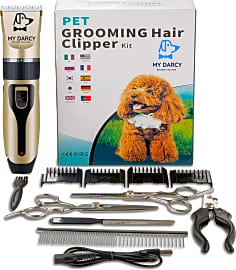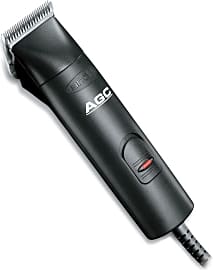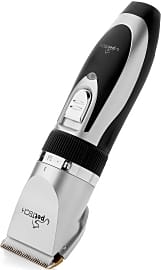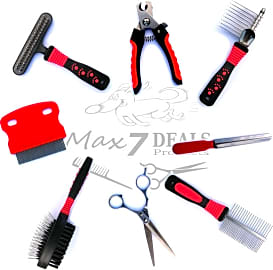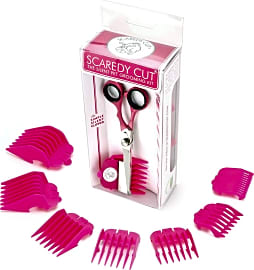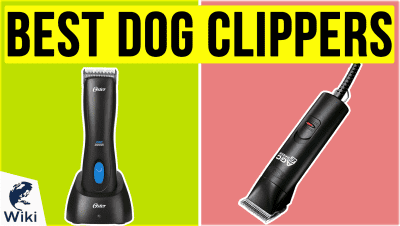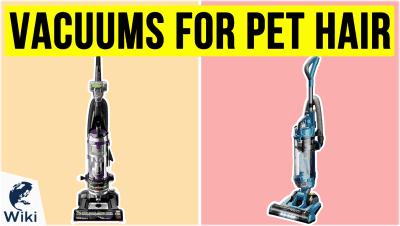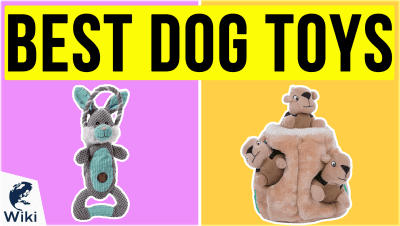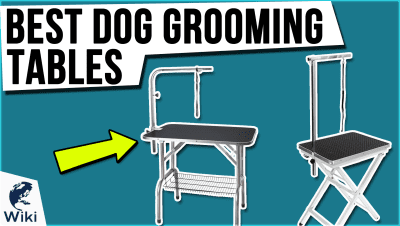The 10 Best Dog Grooming Kits

This wiki has been updated 35 times since it was first published in December of 2016. Keeping a dog looking its best is no simple task. If you have a long-haired breed, like a retriever or a collie, you know how frequently they shed and how easily their coats get matted. One of these dependable grooming kits will make your life easier, keep your house cleaner, and ensure your pooch feels fresh and comfortable, making it a win-win for everybody involved. When users buy our independently chosen editorial choices, we may earn commissions to help fund the Wiki.
Editor's Notes
September 23, 2019:
The Beautiful Styling and Kingstar Home were no longer available, so we dropped those items off the list. We noted several reports that the Razoo Trimmer often fails within a few months, so we also removed that. Similar quality concerns led us to eliminate the Ocoopa Turbo.
Since the list already included several electronic clippers, we opted to add three sets of manual grooming tools that can be used to detangle, remove excess hair, prevent matting, trim nails, and maintain the health of the coat. The Max7Deals Pet Kit is a nice value, with a versatile double-sided comb and brush for dealing with tangles and smoothing out fur, though we did note that the scissors could be sharper.
Users of the Friends Forever Box seem quite satisfied with the professional quality of the combs, brushes and clippers. The tools are gentle on dogs’ skin, and the nail trimmer has a guard to protect the animal from accidents. This option comes with a carrying case, which is a nice touch.
Special Honors
J&J Dog Supplies Deluxe With this 10-piece kit, you’ll be prepared to improve the health of your pooch’s coat at the same time you’re dazzling up its appearance. It includes two types of shampoos, an ear cleaning solution, and an anti-itch spray. The brush, with its wide design and grippy handle, is useful for attacking thick, gnarled patches of fur. jjdog.com
K9 Kennel Ultimate It’s quite the investment, but once you pick up this collection of professional-level grooming tools, you’ll be set for some time. In addition to the typical items, you’ll get a waterproof apron, a cordless nail grinder, an eye and ear cleaning kit, shampoo, toothpaste, and a duffel bag. k9-kennelstore.com
A Brief History Of Pet Grooming
A few centuries later, in the 1500s, hunters began to trim the fur on their curly-coated retrievers in order to allow them to move more smoothly through the water.
The first known emergence of pet grooming comes from Elizabethan times, as artwork dating from around the 14th century C.E. depicts cats and dogs hanging around their royal family members — and notably, they're free of dirt, bugs, and matted fur. It's not known who, exactly, was in charge of grooming these pets, but it seems pretty clear that they were groomed.
A few centuries later, in the 1500s, hunters began to trim the fur on their curly-coated retrievers in order to allow them to move more smoothly through the water. The hindquarters were cut close, while the fur around their neck and shoulders was left longer to add buoyancy. This hair was often tied up in a knot with bright string to let the dogs see better — and allowing these dogs to take credit for the invention of the man-bun.
Most of this early grooming was designed to enable dogs to be more useful during a hunt, but in the 18th century the French began to style their poodles in distinctive patterns. This grooming had no purpose other than to show off the dogs — as well as the fact that their owners had the means to pay for it.
Canine grooming was largely a European pursuit until the 20th century, when several books were published that advocated keeping dogs' coats trimmed and neat. A trainer named Blanche Sanders spearheaded the movement, publishing several books and a manual on how to groom poodles.
As dogs began to be seen as members of the family, they also moved indoors. When given the choice between grooming their pets or constantly having to vacuum up after them, many owners elected to fork over cash to their local puppy salon — or to invest in home kits that allowed them to do it themselves.
Today, many pooches get 'dos that are as elaborate as any you'll find on their owners, as well as baths, pedicures, and teeth cleanings. It turns out that, while they may not be wild animals anymore, you can still make their fur take a walk on the wild side.
How To Know When It's Time To Groom Your Pup
It can be hard to know when it's time to groom your dog. After all, he kind of looks disheveled all the time — it's part of his charm.
Basic brushing is something that should be done pretty much everyday. You can use a brush or a glove, but if you stay consistent with it, you should keep your house relatively free from hair. As an added bonus, giving him a few strokes with the brush every night is vastly preferable to trying to de-thatch his entire winter coat in one sitting.
Basic brushing is something that should be done pretty much everyday.
While doing this, you can also check for fleas, ticks, and other parasites. If you use some sort of flea control, you shouldn't find any bugs, but it's better to find them early than let them feast on your furry little friend. While stroking him, you can also check for any worrisome bumps or lumps.
About every week or so, you should brush his teeth. Periodontal disease is a huge problem among canines, and it can severely shorten their lifespans. Keeping his teeth and gums clean and plaque-free is a great way to give you more time with your best friend.
Once a month, give him a bath. If he has skin problems, you can bathe him more often, using special medicated shampoos. Don't go overboard with this, however, as bathing him too much can strip oils from his skin and dry it out. Anything more than once a week is overkill — not to mention a huge pain the neck for you.
Check his nails periodically to see when it's time to clip them. Typically, this should happen every two or three months, but some dogs are able to file theirs down on their own while walking or digging. You don't want to cut them below the quick, but neither do you want to let them get too long, as that can lead to health problems.
While this might sound like a lot to do, it's really not that bad if you break it up into manageable chunks and schedule everything accordingly. Plus, it gives you even more time to bond with your dog.
Tips For Grooming Your Dog At Home
When introducing your dog to being groomed, it's important to start slow. If you've never even brushed him before, don't start off by trying to give him a complete spa day, as that will only overwhelm him and cause him to be mistrustful of the process. Take your time and slowly introduce him to every aspect of the operation, being sure to give him plenty of positive reinforcement all the while.
He needs to know that it's a regular part of his life, so that it never comes as an unpleasant surprise.
Once he's comfortable with being styled, be sure to be consistent with it. He needs to know that it's a regular part of his life, so that it never comes as an unpleasant surprise.
Do your best to make sure that everything's comfortable for him, as well. For example, while bathing him, keep the water lukewarm — he doesn't appreciate a cold shower or being scalded any more than you do. Don't yank out his fur while brushing him, and take care to make sure none of the soap or other products get in his eyes.
You can also try distracting him through the entire process. Try smearing peanut butter on your shower wall and letting him lick it while you scrub him, or give him a chew bone or squeaky toy to occupy him while he's being brushed.
Ultimately, if you acclimate your dog to being groomed correctly, he should grow to enjoy the process. It lets him spend time with you and get attention — what's not to love?


